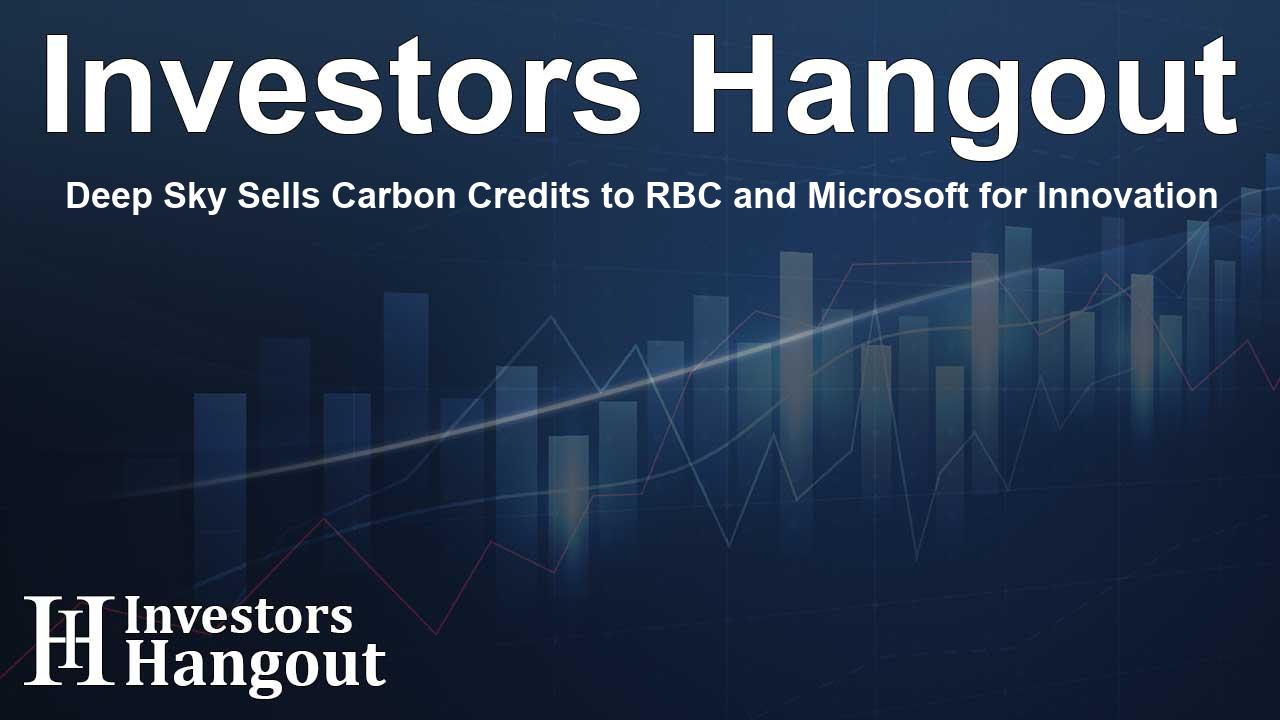Deep Sky Sells Carbon Credits to RBC and Microsoft for Innovation

Deep Sky Partners with Leading Companies in Carbon Removal
Deep Sky, a leading Canadian carbon removal project developer, has made headlines by selling carbon removal credits to prestigious companies such as Royal Bank of Canada and Microsoft. This collaboration exemplifies the commitment these organizations have towards addressing climate change and reducing carbon footprints.
Innovative Carbon Removal Strategies
The ambitious venture aims to facilitate the removal of an impressive 10,000 tonnes of CO2 from the atmosphere over a decade through Deep Sky Labs, an innovative center that specializes in carbon dioxide removal (CDR) technologies. The founding buyers' support is crucial for Deep Sky's mission to create scalable, efficient, and cost-effective carbon removal solutions.
The Role of Deep Sky Labs
Deep Sky Labs marks a significant step in the fight against climate change, being the world's first direct air capture innovation and commercialization center. This facility will host various Direct Air Capture (DAC) technologies, allowing for year-round testing and optimization in the Canadian climate. By aggregating efforts and resources, Deep Sky Labs sets a new benchmark for evaluating carbon removal technology performance.
The Technology Behind Carbon Removal
With plans to deploy eight unique DAC technologies side by side, Deep Sky Labs will utilize renewable energy and permanent carbon storage to ensure comprehensive lifecycle analyses. This tech-agnostic approach minimizes operational risks and enhances the speed at which carbon removal can scale commercially. Buyers of carbon removal credits can directly influence the development of multiple technologies with their investments.
Partnering with Leading DAC Providers
Deep Sky is collaborating with several pioneering DAC providers, selected from nearly 100 global technologies. The chosen partners have been prioritized based on their potential for low energy intensity, simplicity, and scalability. Some notable technology partners include Airhive, Avnos, Phlair, Greenlyte, Mission Zero, NEG8 Carbon, Skyrenu, and Skytree. This collective effort provides a diverse and comprehensive array of CO2 removal capabilities.
A Commitment to Growth and Sustainability
Deep Sky's initiative not only combats climate change but also fosters economic growth within local communities. The project promises to generate green jobs in the region, with around 80 positions during the construction phase and 15 ongoing roles. Over ten years, the initiative is anticipated to inject more than $100 million into the community, paving the way for additional commercial projects across Canada expected to employ around 1,000 workers.
Shift in Carbon Market Dynamics
As the field of carbon removal gains momentum, the role of innovative solutions becomes increasingly vital. Sarah Thompson from RBC Capital Markets emphasized the importance of learning and advancing together with Deep Sky Labs. This partnership signifies RBC's first investment in Direct Air Capture credits, setting a precedent for future environmental market transactions.
Brian Marrs from Microsoft echoed this sentiment, asserting that Deep Sky Labs encapsulates a broad-spectrum approach to DAC technology evaluation, thereby streamlining development for emerging companies in the sector. The collaborative environment fosters expedited learning and adoption of gigaton-scale solutions for global carbon management.
The Future of Carbon Removal Projects
Deep Sky firmly believes in enhancing corporate decarbonization commitments through verified carbon removal credits. These credits will be meticulously tracked from capture to storage with sophisticated Measurement, Reporting, and Verification (MRV) processes, ensuring rigorous validation against global carbon standards. This approach aims to minimize the common risks associated with carbon removal while amplifying the positive community and economic impacts of companies’ decarbonization pathways.
Frequently Asked Questions
What is the purpose of Deep Sky Labs?
Deep Sky Labs aims to test and optimize various carbon removal technologies for performance in the Canadian climate, facilitating scalable carbon removal solutions.
Who are the founding buyers of Deep Sky's carbon credits?
The founding buyers include notable organizations like the Royal Bank of Canada and Microsoft, both of which acknowledge the importance of carbon removal in climate action.
How many tonnes of CO2 does Deep Sky aim to remove?
Deep Sky intends to remove 10,000 tonnes of CO2 over a ten-year period through its innovative carbon removal strategies.
What are the expected job impacts of this initiative?
Deep Sky's projects are expected to create around 80 construction jobs and 15 ongoing operational roles, as well as open opportunities for about 1,000 jobs in future commercial endeavors.
How will carbon removal credits be validated?
Carbon removal credits produced by Deep Sky projects will undergo rigorous tracking and validation processes to ensure compliance with established carbon standards.
About The Author
Contact Evelyn Baker privately here. Or send an email with ATTN: Evelyn Baker as the subject to contact@investorshangout.com.
About Investors Hangout
Investors Hangout is a leading online stock forum for financial discussion and learning, offering a wide range of free tools and resources. It draws in traders of all levels, who exchange market knowledge, investigate trading tactics, and keep an eye on industry developments in real time. Featuring financial articles, stock message boards, quotes, charts, company profiles, and live news updates. Through cooperative learning and a wealth of informational resources, it helps users from novices creating their first portfolios to experts honing their techniques. Join Investors Hangout today: https://investorshangout.com/
The content of this article is based on factual, publicly available information and does not represent legal, financial, or investment advice. Investors Hangout does not offer financial advice, and the author is not a licensed financial advisor. Consult a qualified advisor before making any financial or investment decisions based on this article. This article should not be considered advice to purchase, sell, or hold any securities or other investments. If any of the material provided here is inaccurate, please contact us for corrections.
